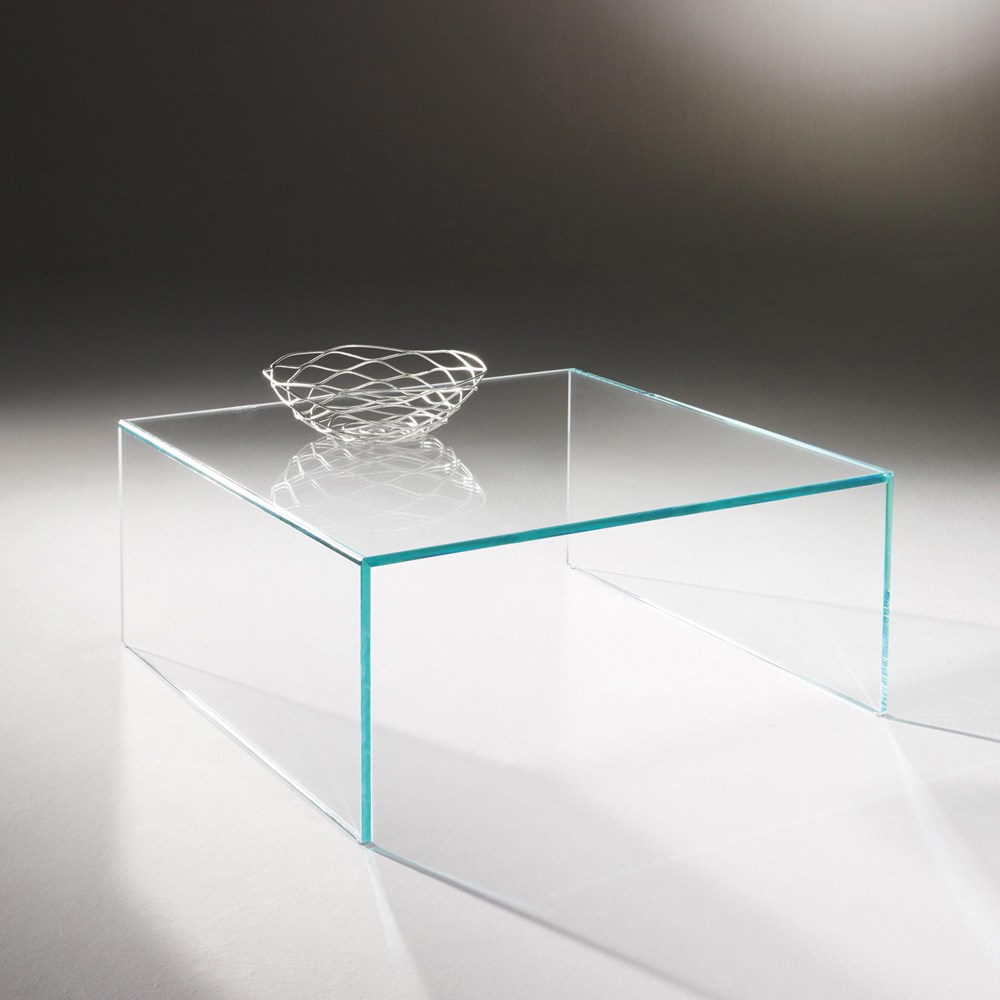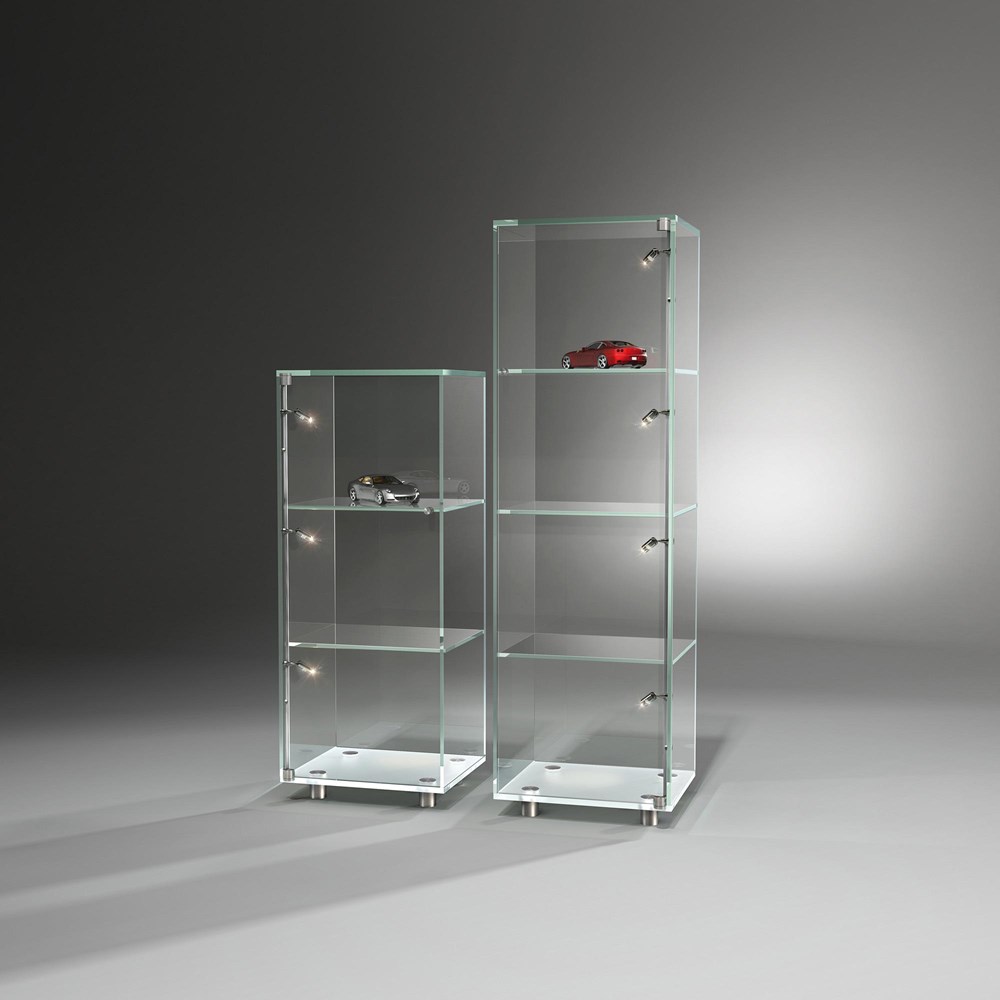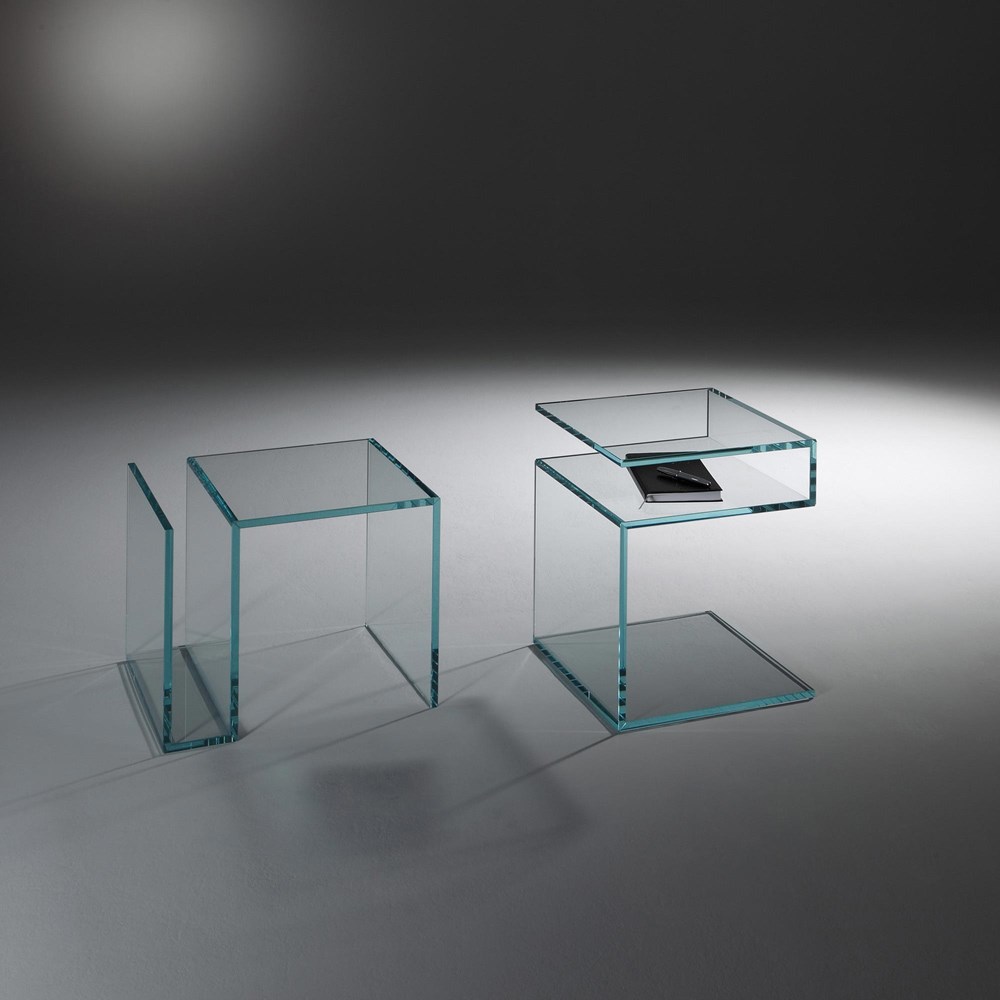-
Free Delivery in DE, AT & CH
-
Made in Germany
-
Individual Customisation Available
Author: DREIECK DESIGN editorial department
Last update: 24.09.2020
When talking about glass, one usually means the normal, clear float glass. There is also the so-called Optiwhite glass, colloquially called white glass. Find out where the difference between Optiwhite glass and float glass and what properties white glass has.

(Photo shows Optiwhite glass coffee table ARCADIA, from 824,-- EUR)
Optiwhite glass is the crystal clear version of float glass. The term Optiwhite is simply a brand name, one could also speak of white glass. This contrasts with normal float glass with its characteristic green tint, which is particularly visible at the cut edge.
And how is white glass made? Well, Optiwhite glass only contains around 1% iron oxide. The iron oxide in the raw material, in turn, has a greenish shimmer when light falls on it. A very low iron oxide content means that the green shimmer is automatically reduced significantly.
Only a light turquoise hue remains on the glass edge - even white glass is never completely colorless.
Whether you want to call it Optiwhite glass, clear glass or white glass: the fact is that transparent glass is not least suitable as a component of elegant furniture.
The clear glass surfaces give the interior a puristic, modern touch.
It is also practical that the glass thickness of many products can be selected relatively freely - the principle of glass made to measure allows a wide variety of design ideas to be implemented.
The biggest difference between the two variants is the iron oxide content and the very high light transmission with clear glass. White glass is highly translucent, so that a perfect view is possible and colors behind the glass come into their own. Incidentally, there is currently no standard for when glass is officially considered “white glass”.
In terms of quality, float glass and Optiwhite are in no way inferior - after all, white glass is nothing more than a variant of float glass. Whether one or the other design is more recommendable depends primarily on personal taste: If you want to rely on neutral aesthetics, for example, white glass is the best choice. Classic float glass comes with shimmering green edges.
As already mentioned, the highly transparent glass is a popular material in furniture design. As a table top, for the glass shelf on the shelf or otherwise:
The simple, elegant material is versatile in use. But you have also come across Optiwhite glass beyond that - maybe even today?
Car windows, for example, are made of toughened safety glass (ESG). This glass is nothing more than specially pretreated white glass.
Aquariums made of white glass, white glass windows and so on are also popular. Of course, it is impossible to list all areas of application here - so let's concentrate on our area of expertise: furniture design!

(Photo shows Optiwhite glass cabinet SOLUS, from 1.374,-- EUR)
Tables with glass elements, e.g. B. a coffee table with Optiwhite glass, do not always look the same. And not just because of the design - no, the size of the glass surface and the glass thickness play an important role here.
The following rule of thumb applies:
The larger a white glass surface and the thicker the glass plate, the clearer the green note or the turquoise shimmer comes into play.
For this reason, it is always advisable to view the glass furniture or other glass products live in a furniture store. This allows you to make a direct comparison and better assess the extent to which glass thickness and surface affect the optics.
How transparent the glass surface actually is can easily be tested with such a live exploration: Place a white sheet of paper under the table surface. With very pure, high-quality Optiwhite glass, you will hardly see any discoloration.
With normal float glass, however, a green shimmer would probably be seen.

(Photo shows side tables JANUS III in Optiwhite glass)
Many cupboards and shelves contain glass elements. From simple glass shelves to glass showcases: transparent glass also creates a discreet and stylish impression with this furniture.
And again the glass thickness plays an important role - if you e.g. For example, if you are looking for a shelf where you want to stage special decorative objects, Optiwhite is a good choice. Even with very stable, thick glass plates, the green cast at the cut edge is then still significantly less than with classic float glass.
So that the glass furniture does not lose its visual effect in the long term, it is of course important to clean it regularly. And not just somehow, but carefully and glass-friendly. Read how in the glass cleaning guide!
You have found the perfect piece of glass furniture - but it is too big for the space where you would like to place it? This situation is all too familiar to many. Therefore, our online-shop and many retailers offer the option of glass made to measure: they express individual wishes and the piece of furniture is adapted accordingly.
Tip: If you choose Optiwhite furniture from DREIECK DESIGN, you can easily choose the glass option in the ordering process under "CUSTOMIZE". Customization is not a problem!
Finally, a little digression into aquaristics: white glass is a popular choice among aquarium owners. After all, the glass has to withstand considerable water pressure and is accordingly thick. With ordinary float glass, the glass thickness quickly creates the relatively distinctive green tint. However, the decision is Optiwhite vs. Float glass is always a question of price, as you will see below.
If you want to buy Optiwhite glass, you should calculate with a little more budget. But why is the white glass more expensive than normal float glass? This fact arises. a. from the fact that the production of clear glass products is much more energy-intensive. This, in turn, is not least due to the comparatively low proportion of waste glass contained in the mixture.
As is so often the case, the cost of Optiwhite glass is a question of quality. High purity and careful, complex processing have their price ...
Optiwhite glass has long established itself as an all-rounder thanks to its elegant, minimalist look. Especially in the interior area, the transparent glass with a slightly turquoise edge is often used when a timeless yet modern look is to be achieved. With proper care, an Optiwhite piece of glass furniture is more than just a trend piece of furniture - it enriches the furnishings in the long term.
Are you curious? Then come and visit us at a DREIECK DESIGN dealer near you and see for yourself the difference between Optiwhite and Float glass. If you have any further questions, please do not hesitate to contact us!
Clear glass refers to transparent glass, so it is in contrast to opaque frosted glass. Clear glass can include both untreated float glass - with green shimmering edges - and white glass. Clear glass is therefore the umbrella term for white glass.
Yes, white glass is usually a bit more expensive than "normal" float glass, since a special glass mass with a low iron oxide content is required for production. For this reason, it contains less waste glass than "normal" float glass. However, the price of the glass depends on numerous other factors (purpose, thickness, size, shape, safety glass, etc.), so that it is ultimately not possible to say how large the price difference is in individual cases.
If you want to distinguish between different glass colors, there is the greenish shimmering "normal" float glass, the crystal-clear white glass and glass colored in various tones. If one differentiates with regard to the safety aspect, untreated glass, toughened safety glass (ESG), laminated safety glass (VSG) and partially toughened glass (TVG) are available. In addition, one can also distinguish between the transparency of the glasses, e.g. B. the transparent clear glass of opaque types of glass such as frosted glass (frosted glass) and ornamental glass.